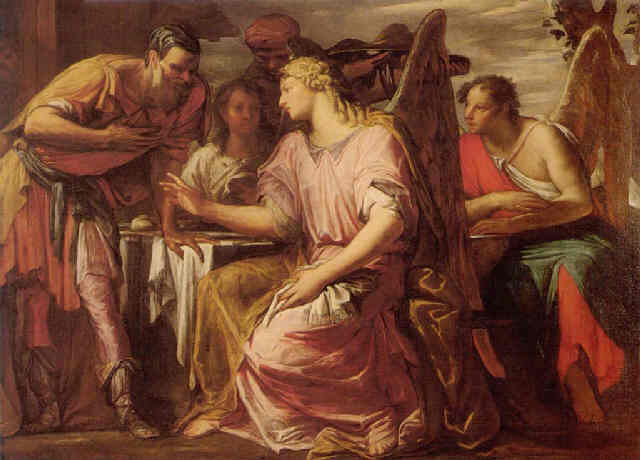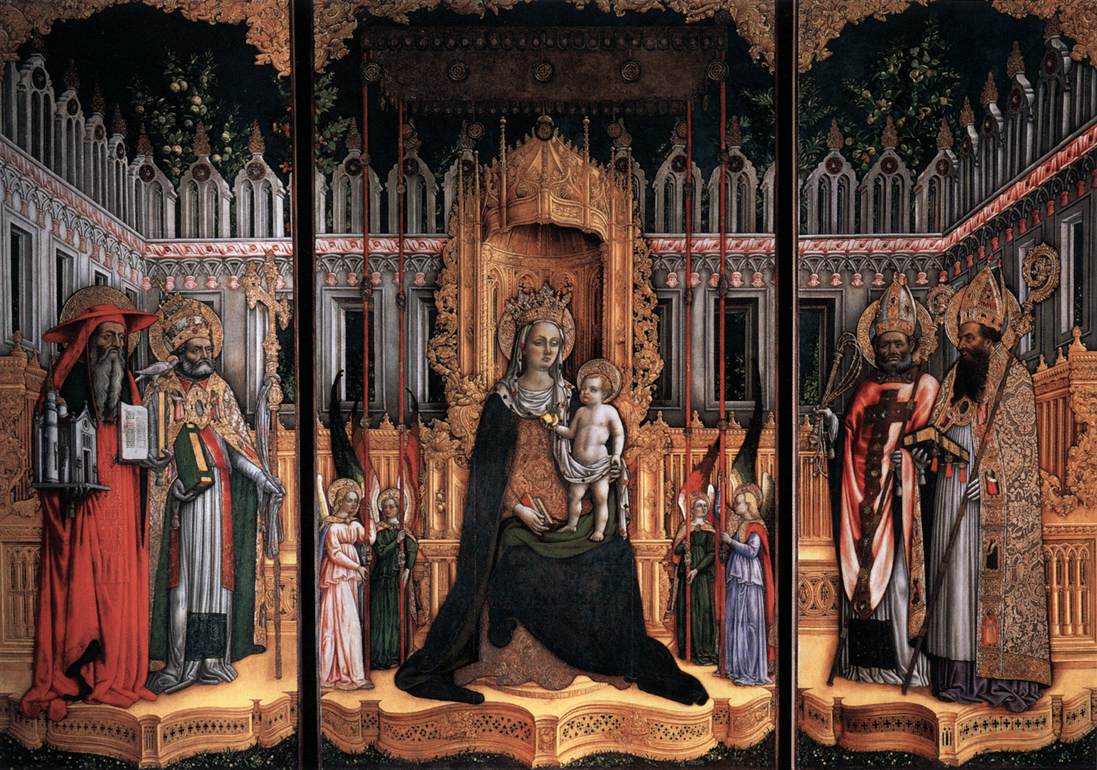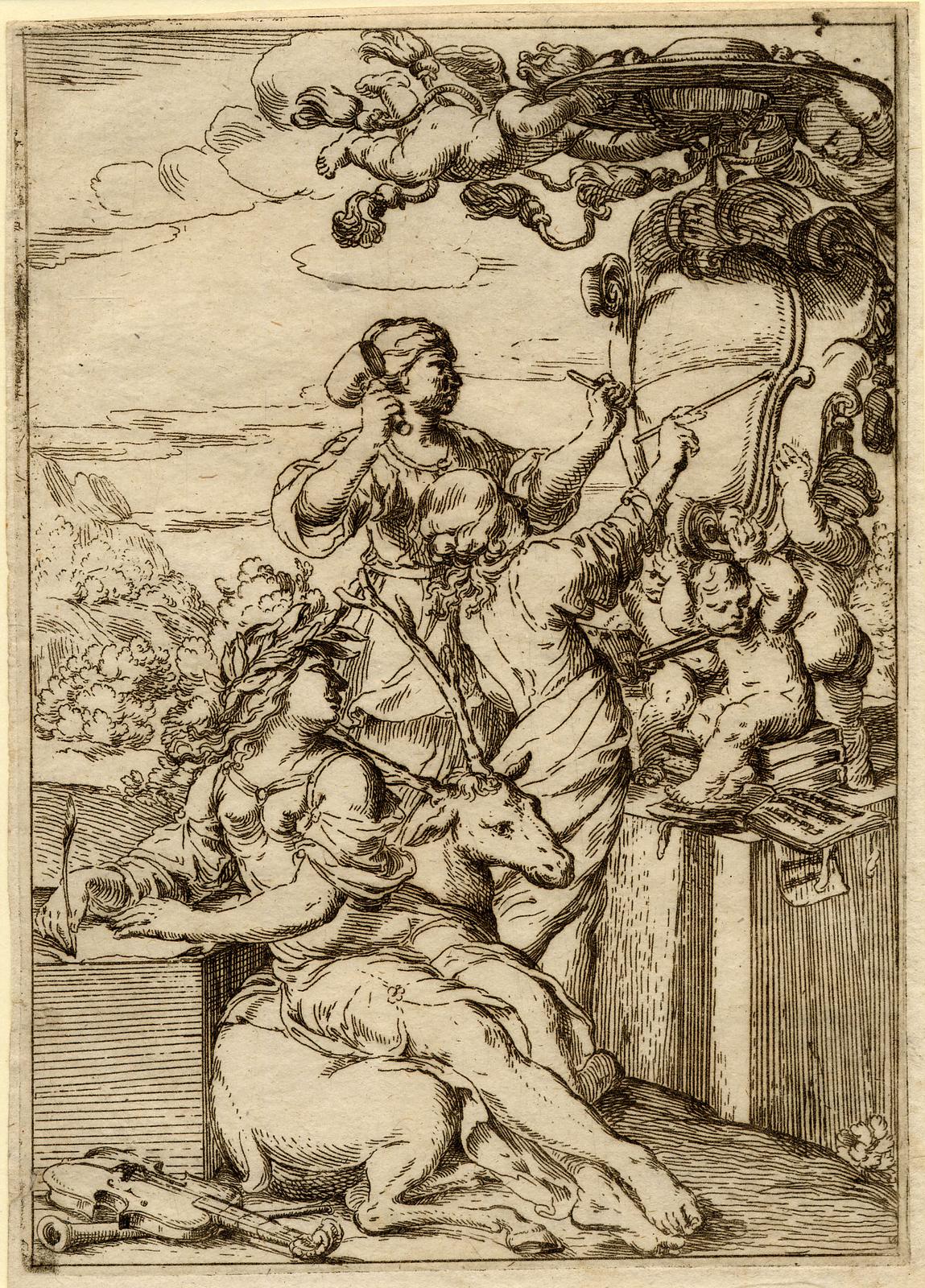|
San Pantalon
The Chiesa di San Pantaleone Martire, known as San Pantalon in the Venetian dialect, is a church in the Dorsoduro ''sestiere'' of Venice, Italy. It is located on the Campo San Pantalon (square), and is dedicated to Saint Pantaleon. The 17th-century Chiesa di San Pantalon is a parish church of the Vicariate of San Polo-Santa Croce-Dorsoduro. Architectural elements San Pantalon is particularly well known for its immense ceiling painting, depicting ''The Martyrdom and Apotheosis of St Pantalon''. It was painted on canvas by Gian Antonio Fumiani between 1680 and 1704, when he fell to his death from the scaffolding. Other notable works include ''Coronation of the Virgin'' by Antonio Vivarini and Giovanni d'Alemagna in the Chapel of the Holy Nail and ''St Pantalon healing a Boy'', the last work by Veronese, originally commissioned for the high altar. Assessments of the Fumiani fresco Modern critics note that the dramatic sotto in su canvas marks the entry of Bolognese quadratura to ... [...More Info...] [...Related Items...] OR: [Wikipedia] [Google] [Baidu] |
Venice
Venice ( ; it, Venezia ; vec, Venesia or ) is a city in northeastern Italy and the capital of the Veneto Regions of Italy, region. It is built on a group of 118 small islands that are separated by canals and linked by over 400 bridges. The islands are in the shallow Venetian Lagoon, an enclosed bay lying between the mouths of the Po River, Po and the Piave River, Piave rivers (more exactly between the Brenta (river), Brenta and the Sile (river), Sile). In 2020, around 258,685 people resided in greater Venice or the ''Comune di Venezia'', of whom around 55,000 live in the historical island city of Venice (''centro storico'') and the rest on the mainland (''terraferma''). Together with the cities of Padua, Italy, Padua and Treviso, Italy, Treviso, Venice is included in the Padua-Treviso-Venice Metropolitan Area (PATREVE), which is considered a statistical metropolitan area, with a total population of 2.6 million. The name is derived from the ancient Adri ... [...More Info...] [...Related Items...] OR: [Wikipedia] [Google] [Baidu] |
Roman Catholic
Roman or Romans most often refers to: *Rome, the capital city of Italy *Ancient Rome, Roman civilization from 8th century BC to 5th century AD *Roman people, the people of ancient Rome *'' Epistle to the Romans'', shortened to ''Romans'', a letter in the New Testament of the Christian Bible Roman or Romans may also refer to: Arts and entertainment Music * Romans (band), a Japanese pop group * ''Roman'' (album), by Sound Horizon, 2006 * ''Roman'' (EP), by Teen Top, 2011 *" Roman (My Dear Boy)", a 2004 single by Morning Musume Film and television * Film Roman, an American animation studio * ''Roman'' (film), a 2006 American suspense-horror film * ''Romans'' (2013 film), an Indian Malayalam comedy film * ''Romans'' (2017 film), a British drama film * ''The Romans'' (''Doctor Who''), a serial in British TV series People *Roman (given name), a given name, including a list of people and fictional characters *Roman (surname), including a list of people named Roman or Romans *Ῥωμ� ... [...More Info...] [...Related Items...] OR: [Wikipedia] [Google] [Baidu] |
Dorsoduro
Dorsoduro is one of the six sestieri of Venice, in northern Italy. Dorsoduro includes the highest land areas of the city and also Giudecca island and Isola Sacca Fisola. Its name derives from the Italian for "hard ridge", due to its comparatively high, stable land. History The original heart of the area was the Giudecca Canal, along which buildings were constructed from the sixth century. By the eleventh century, settlement had spread across to the Grand Canal, while later religious buildings including the Basilica of Santa Maria della Salute and the Zattere quay are now its main landmarks. In the nineteenth century the Accademia was set up in Dorsoduro and the Ponte dell'Accademia linked it to San Marco, making it an expensive area, popular with foreign residents. The western quarter end and the Giudecca, became industrialised around this time. Main sights Landmarks and visitor attractions in Dorsoduro include: *Ca' Foscari *Ca' Rezzonico *Campo San Barnaba * Campo San ... [...More Info...] [...Related Items...] OR: [Wikipedia] [Google] [Baidu] |
Saint Pantaleon
Saint Pantaleon ( el, Παντελεήμων, russian: Пантелеи́мон, translit=Panteleímon; "all-compassionate"), counted in the West among the late-medieval Fourteen Holy Helpers and in the East as one of the Holy Unmercenary Healers, was a martyr of Nicomedia in Bithynia during the Diocletianic Persecution of 305 AD. Though there is evidence to suggest that a martyr named Pantaleon existed, some consider the stories of his life and death to be purely legendary. Life of Pantaleon According to the martyrologies, Pantaleon was the son of a rich pagan, Eustorgius of Nicomedia, and had been instructed in Christianity by his Christian mother, Saint Eubula; however, after her death he fell away from the Christian church, while he studied medicine with a renowned physician Euphrosinos; under the patronage of Euphrosinos he became physician to the emperor, Galerius. He was won back to Christianity by Saint Hermolaus (characterized as a bishop of the church at Nicomedi ... [...More Info...] [...Related Items...] OR: [Wikipedia] [Google] [Baidu] |
Gian Antonio Fumiani
Giovanni Antonio Fumiani (1645–1710) was an Italian painter of the Baroque period. Biography Born in Venice in 1645, he trained in Bologna under Domenico degli Ambrogi, a specialist in quadratura, but by 1668 he was back in Venice, where he painted a ''Virgin and Saints'' in San Benedetto. He was influenced by Ludovico Carracci and Alessandro Tiarini, and soon also became interested in the work of Paolo Veronese, so that he started to use elaborate architectural settings and brighter colours. He painted a ''Virgin Appearing to Pius V'' (1674; Vicenza, S Lorenzo), whose monumentality foreshadows Tiepolo, whereas mosaics in San Marco, created in 1677 from Fumiani’s cartoons, are closer to the idiosyncratic art of Pietro della Vecchia. He contributed to the decoration of San Rocco (1675, 1676, 1678), where he painted a large canvas of the ''Charity of St Roch'' on the ceiling of the nave, In his smaller paintings, however, such as the modelli (Florence, Uffizi) painted for ... [...More Info...] [...Related Items...] OR: [Wikipedia] [Google] [Baidu] |
Antonio Vivarini
Antonio Vivarini (Antonio of Murano) (active c. 14401480) was an Italian painter of the early Renaissance-late Gothic period, who worked mostly in the Republic of Venice. He is probably the earliest of a family of painters, which was descended from a family of glassworkers active in Murano. The painting dynasty included his younger brother Bartolomeo and Antonio's son Alvise Vivarini. Life He initially trained with Andrea da Murano, and his works show the influence of Gentile da Fabriano. The earliest known date of a picture of his, an altar-piece in the Accademia is 1440; the latest, in the Vatican Museums, 1464, but he appears to have been alive in 1470. He collaborated with his brother in law, Giovanni d'Alemagna (also known as "Joannes de Alemania"), who sometimes has been regarded as a brother (Giovanni of Murano). No trace of this painter exists of a date later than 1447. After 1447 Antonio painted either alone or in combination with his younger brother Bartolommeo i ... [...More Info...] [...Related Items...] OR: [Wikipedia] [Google] [Baidu] |
Giovanni D'Alemagna
Giovanni d'Alemagna (; born Johannes Alamanus; 9 July 1450) was a Venetian renaissance painter of German ancestry, active in Italy, with his brother-in-law Antonio Vivarini on religious paintings in Venice and Padua, that are preserved in the named cities together with those of Vivarini. Biography Giovanni d'Alemagna is remembered above all for the work done in Venice, characterized by decorative forms that recall Nordic influence. Between 1430 and 1435 he created a cycle called Stories of Christ, which are still exhibited at the Ca' d'Oro. According to Ridolfo and Zanetti, Giovanni and Antonio Vivarini flourished about the year 1440, where they adduce authority for an altar-piece in San Pantalon, which bears the inscription of Zuane e Antonio da Muran pense 1444. Although it is difficult to distinguish the two artists' contributions, Giovanni is associated with the St Jerome (1444), which carries the signature 'Johannes'. This painting suggests that Giovanni's work was gener ... [...More Info...] [...Related Items...] OR: [Wikipedia] [Google] [Baidu] |
Paolo Veronese
Paolo Caliari (152819 April 1588), known as Paolo Veronese ( , also , ), was an Italian Renaissance painter based in Venice, known for extremely large history paintings of religion and mythology, such as ''The Wedding at Cana'' (1563) and ''The Feast in the House of Levi'' (1573). Included with Titian, a generation older, and Tintoretto, a decade senior, Veronese is one of the "great trio that dominated Venetian painting of the ''cinquecento''" and the Late Renaissance in the 16th century.Rosand, 107 Known as a supreme colorist, and after an early period with Mannerism, Paolo Veronese developed a naturalist style of painting, influenced by Titian. His most famous works are elaborate narrative cycles, executed in a dramatic and colorful style, full of majestic architectural settings and glittering pageantry. His large paintings of biblical feasts, crowded with figures, painted for the refectories of monasteries in Venice and Verona are especially famous, and he was also the leadi ... [...More Info...] [...Related Items...] OR: [Wikipedia] [Google] [Baidu] |
Sotto In Su
Illusionistic ceiling painting, which includes the techniques of perspective ''di sotto in sù'' and ''quadratura'', is the tradition in Renaissance, Baroque and Rococo art in which ''trompe-l'œil'', perspective tools such as foreshortening, and other spatial effects are used to create the illusion of three-dimensional space on an otherwise two-dimensional or mostly flat ceiling surface above the viewer. It is frequently used to create the illusion of an open sky, such as with the oculus in Andrea Mantegna's Camera degli Sposi, or the illusion of an architectural space such as the cupola, one of Andrea Pozzo's frescoes in Sant'Ignazio, Rome. Illusionistic ceiling painting belongs to the general class of illusionism in art, designed to create accurate representations of reality. Di sotto in sù ''Di sotto in sù'' (or ''sotto in su''), which means "seen from below" or "from below, upward" in Italian, developed in late quattrocento Italian Renaissance painting, notably in Andrea ... [...More Info...] [...Related Items...] OR: [Wikipedia] [Google] [Baidu] |
Quadratura
Illusionistic ceiling painting, which includes the techniques of perspective ''di sotto in sù'' and ''quadratura'', is the tradition in Renaissance, Baroque and Rococo art in which ''trompe-l'œil'', perspective tools such as foreshortening, and other spatial effects are used to create the illusion of three-dimensional space on an otherwise two-dimensional or mostly flat ceiling surface above the viewer. It is frequently used to create the illusion of an open sky, such as with the oculus in Andrea Mantegna's Camera degli Sposi, or the illusion of an architectural space such as the cupola, one of Andrea Pozzo's frescoes in Sant'Ignazio, Rome. Illusionistic ceiling painting belongs to the general class of illusionism in art, designed to create accurate representations of reality. Di sotto in sù ''Di sotto in sù'' (or ''sotto in su''), which means "seen from below" or "from below, upward" in Italian, developed in late quattrocento Italian Renaissance painting, notably in Andre ... [...More Info...] [...Related Items...] OR: [Wikipedia] [Google] [Baidu] |
Domenico Degli Ambrogi
Domenico Ambrogi (c. 1600-after 1678) was an Italian painter from Bologna of the 17th century, also called ''Menichino'' or ''Menghino del Brizio'', after a master. Mainly known as a decorator of quadratura. He is also known as Domenico degli Ambrogi. He trained with Francesco Brizio, Bernardino Baldi (active 1599-1615), and Denis Calvaert. Biography Domenico Ambrogi was born in Bologna around 1600. As a young man he was apprenticed to Bernardino Baldi, from whom he left shortly before Bernardino Baldi died (30 Jan. 1612). After that he studied with Denis Calvaert for a short period of time and finally, became an apprentice of Francesco Brizio. At that time Brizio gave public lessons in drawing and perspective, and Ambrogi received the nickname of Menghino or Menichino del Brizio. When he left the master, he collaborated with Girolamo Curti, known as Dentone as a painter of figures, and with Angelo Michele Colonna as a painter of "quadrature". During his last years he made many ... [...More Info...] [...Related Items...] OR: [Wikipedia] [Google] [Baidu] |
Quattrocento
The cultural and artistic events of Italy during the period 1400 to 1499 are collectively referred to as the Quattrocento (, , ) from the Italian word for the number 400, in turn from , which is Italian for the year 1400. The Quattrocento encompasses the artistic styles of the late Middle Ages (most notably International Gothic), the early Renaissance (beginning around 1425), and the start of the High Renaissance, generally asserted to begin between 1495 and 1500. Historical context After the decline of the Western Roman Empire in 476, economic disorder and disruption of trade spread across Europe. This was the beginning of the Early Middle Ages, which lasted roughly until the 11th century, when trade increased, population began to expand and the people regained their authority. In the late Middle Ages, the political structure of the European continent slowly coalesced from small, turbulent fiefdoms into larger, more stable nation states ruled by monarchies. In Italy, urban ce ... [...More Info...] [...Related Items...] OR: [Wikipedia] [Google] [Baidu] |
.jpg)

_by_shakko.jpg)




.jpg)
